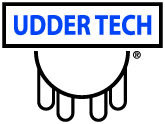Corn residue grazing is an opportunity to extend the grazing season and capitalize on a feed resource that can make a big difference in a producer’s bottom line. Here are some things to keep in mind to make the most effective use.
Evaluate fields for presence of spilled or down corn left in the field, especially if impacted by heavy winds during the growing season. Strip grazing, or limiting access for a few days before moving the fence, and adapting cattle to grain prior to turnout may be necessary to reduce the risk of acidosis.
Due to grazing selection and weathering losses, corn residue quality steadily decreases after harvest and rapidly drops off after about 60 days after harvested. Cattle prefer to eat the grain first, followed by the husk and leaf, and finally, maybe the cob and stalk. If cows have husk and leaf to select, they will consume a diet that is 55% to 70% TDN and about 5.5% to 7% crude protein (CP). University of Nebraska data indicates there will be about 16 pounds of dry leaf and husk per bushel of corn yield, so a field yielding 175 bushels per acre would produce approximately 2,800 pounds of high-quality corn residue.
The concern of palatability and digestibility of GMO corn residue continues to be a topic of interest among many cow-calf producers. Preliminary work at Iowa State comparing conventional and GMO varieties of corn residue noted about a 5% decrease in digestibility and feed value of GMO varieties.
Mature, pregnant cows in mid-gestation can graze recently harvested crop residue with no supplementation other than free-choice mineral. First-calf heifers, thin cows, cows nursing calves or cows in third trimester require both protein and energy supplementations, in addition to vitamins and minerals. All classes of cattle will likely require supplementation if remaining on the same field for more than 60 days.
While cattle can graze through snow, deep snow or ice can severely impact cow ability to graze corn residue. Therefore, have a backup plan for delivering feed and be aware that quality decreased after heavy moisture.
University of Nebraska has developed a corn residue grazing calculator that may help plan appropriate stocking rates and grazing intervals. It can be accessed at Corn stalk grazing calculator.











